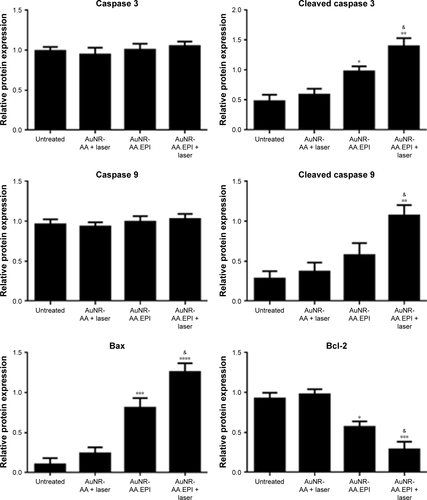Figures & data
Figure 1 A schematic representation of anisamide-targeted PEGylated AuNRs for delivery of EPI to achieve photothermal therapy and chemotherapy in cancer.
Notes: (A) The scheme of anisamide-targeted AuNR.EPI formulation. (B) Targeted formulation will specifically bind sigma receptor, a well-known molecule overexpressing on the cell membrane of prostate cancer cells, achieving cellular uptake via receptor-mediated endocytosis. EPI will be released from targeted formulation in acidic environments (ie, endosomes). Following endosomal escape with the assistance of NIR irradiation, AuNRs may generate PTT, and EPI may enter the nucleus to induce chemotherapy. Consequently, the synergistic anticancer effect will be achieved using anisamide-targeted AuNR.EPI formulation.
Abbreviations: AuNRs, gold nanorods; EPI, epirubicin; NIR, near-infrared; CTAB, hexadecyltrimethylammonium bromide; PAA, poly(acrylic acid); AA, anisamide; PTT, photothermal therapy.
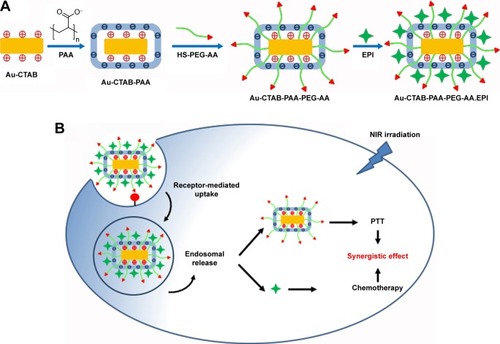
Figure 2 (A) SEM of Au800-CTAB (scale bar =400 nm); (B) TEM of Au800-CTAB (scale bar =50 nm); (C) UV-vis spectrum of Au700-CTAB, Au725-CTAB, Au765-CTAB, and Au800-CTAB; (D) zeta potential of Au800-CTAB, Au800-CTAB-PAA, Au800-CTAB-PAA-PEG, and Au800-CTAB-PAA-PEG-AA obtained using the Malvern Nano-ZS; (E) high-energy SEM of Au800-CTAB-PAA-PEG-AA (scale bar =200 nm).
Abbreviations: AuNRs, gold nanorods; SEM, scanning electron microscopy; CTAB, hexadecyltrimethylammonium bromide; PAA, poly(acrylic acid); AA, anisamide; TEM, transmission electron microscopy; PEG, polyethylene glycol.
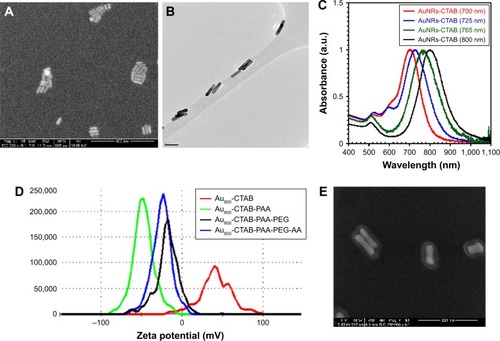
Table 1 Physicochemical characterization of AuNRs and AuNR.EPI complexes (MR =5) (n=5)
Figure 3 The in vitro release of EPI from Au800-CTAB-PAA-PEG-AA (MR =5) in pH =5.5 and 7.4 at 37°C with 400 rpm shaking (n=5; ***P<0.001).
Abbreviations: Au, gold; EPI, epirubicin; MR, mass ratio; CTAB, hexadecyltrimethyl-ammonium bromide; PAA, poly(acrylic acid); AA, anisamide; PEG, polyethylene glycol.

Figure 4 Cellular uptake of anisamide-targeted AuNRs in PC-3 cells was measured using (A) confocal microscopy and (B) flow cytometry.
Note: The images were acquired using an LSM 800 Zeiss confocal microscope (40×).
Abbreviations: AuNRs, gold nanorods; EPI, epirubicin; CTAB, hexadecyltrimethylammonium bromide; PAA, poly(acrylic acid); AA, anisamide; PEG, polyethylene glycol.
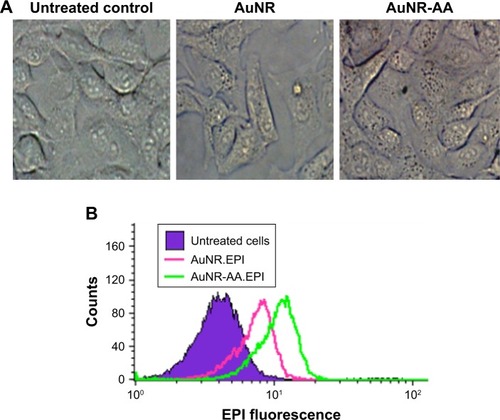
Figure 5 Intracellular distribution of anisamide-targeted AuNRs in PC-3 cells.
Notes: PC-3 cells were treated with 5 µg/mL of Au800-CTAB-PAA-PEG or Au800-CTAB-PAA-PEG-AA and incubated for 4 hours. A definite fraction of EPI (red) was detected inside endosomes/lysosomes (green) (as indicated by yellow arrows) for targeted AuNR.EPI complex (MR =5). Following the laser irradiation at 808 nm at 2.5 W/cm2 for 0.5 minutes, no obvious co-localization of red and green fluorescence was evident in cells treated with targeted AuNR.EPI complex, and EPI was clearly found inside the nucleus. The images were acquired using an LSM 800 Zeiss confocal microscope (40×).
Abbreviations: AuNRs, gold nanorods; EPI, epirubicin; CTAB, hexadecyltrimethylammonium bromide; PAA, poly(acrylic acid); AA, anisamide; PEG, polyethylene glycol; MR, mass ratio.
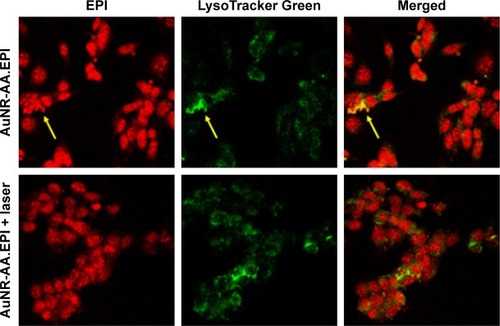
Figure 6 The expression of caspase 3, cleaved caspase 3 (phosphorylated form), caspase 9, cleaved caspase 9 (phosphorylated form), Bcl-2, Bax, and β-actin was determined using Western blotting.
Note: Untreated = untreated cells; AuNR-AA + laser = Au800-CTAB-PAA-PEG-AA plus laser irradiation; AuNR-AA.EPI = Au800-CTAB-PAA-PEG-AA.EPI; and AuNR-AA.EPI + laser = Au800-CTAB-PAA-PEG-AA.EPI plus laser irradiation.
Abbreviations: AuNRs, gold nanorods; EPI, epirubicin; CTAB, hexadecyltrimethylammonium bromide; PAA, poly(acrylic acid); AA, anisamide; PEG, polyethylene glycol.
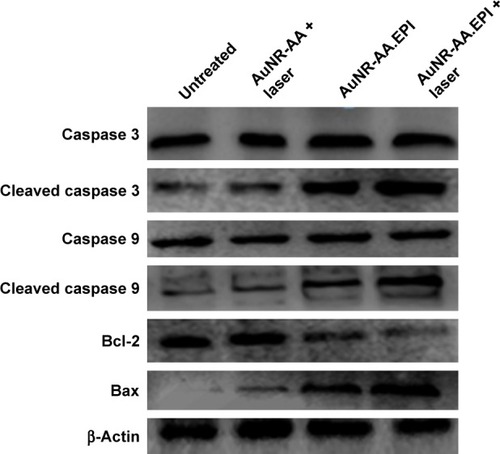
Figure 7 Cell viability measured in PC-3 cells after 24 hours and 48 hours of treatment with anisamide-targeted AuNR.EPI complex plus laser irradiation (808 nm at 2.5 W/cm2 for 0.5 minutes) using MTT assay (n=3). EPI =1 µM; AuNR = Au800-CTAB-PAA-PEG; AuNR.EPI = Au800-CTAB-PAA-PEG.EPI (MR =5); AuNR-AA = Au800-CTAB-PAA-PEG-AA; and AuNR-AA.EPI = Au800-CTAB-PAA-PEG-AA.EPI (MR =5). *P<0.05 and **P<0.01 relative to EPI; #P<0.05 and ##P<0.01 relative to AuNR.EPI; $P<0.0 relative to AuNR-AA.EPI.
Abbreviations: AuNRs, gold nanorods; EPI, epirubicin; CTAB, hexadecyltrimethyl-ammonium bromide; PAA, poly(acrylic acid); AA, anisamide; PEG, polyethylene glycol; MR, mass ratio.
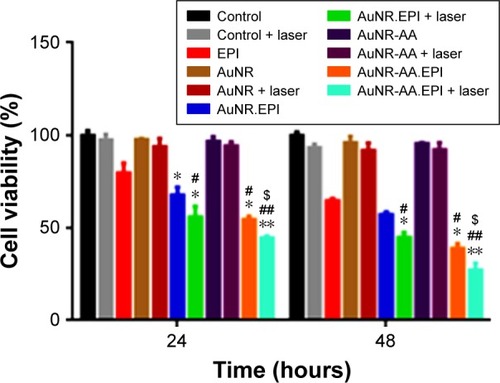
Figure 8 (A) PC-3 xenograft mice (n=4 per group) following intratumoral injections of Au800-CTAB-PAA-PEG-AA.EPI (MR 5; ~0.5 mg/kg EPI) followed by 808 nm laser stimulation at 2.5 W/cm2 for 2 minutes on days 1, 3, 5, 7, and 9. (B) The image of tumors was obtained at day 17. (C) At predetermined days, body weight (mean ± SD, n=4) was recorded to determine in vivo toxicity (*P<0.05).
Abbreviations: AuNRs, gold nanorods; EPI, epirubicin; CTAB, hexadecyltrimethylammonium bromide; PAA, poly(acrylic acid); AA, anisamide; PEG, polyethylene glycol; MR, mass ratio; NS, not significant.
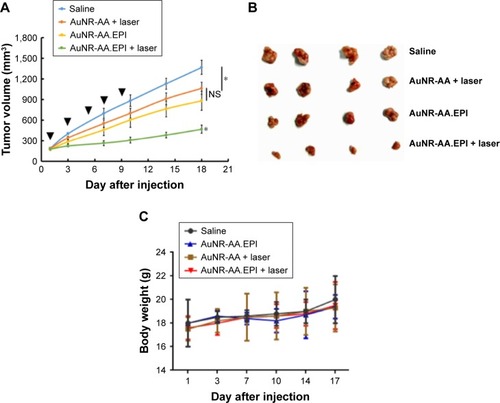
Figure S1 TEM images of Au700-CTAB, Au725-CTAB, and Au765-CTAB (scale bar =50 nm).
Abbreviations: TEM, transmission electron microscopy; Au, gold; CTAB, hexadecyltrimethylammonium bromide.
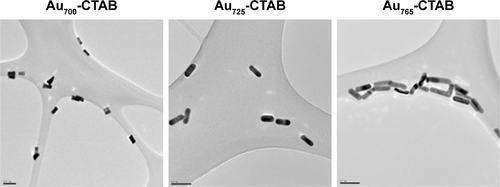
Figure S2 1H NMR spectrum of anisic-NHS.
Abbreviations: NMR, nuclear magnetic resonance; NHS, N-hydroxysuccinimide.
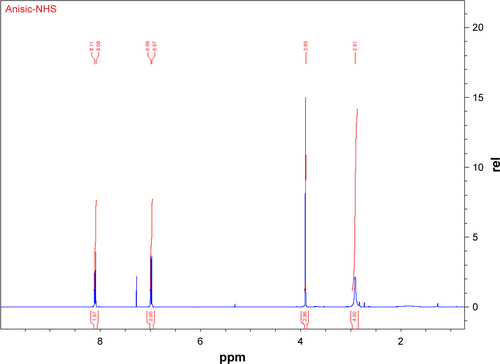
Figure S3 1H NMR spectrum of SH-PEG5000-AA.
Abbreviations: NMR, nuclear magnetic resonance; PEG, polyethylene glycol; AA, anisamide.
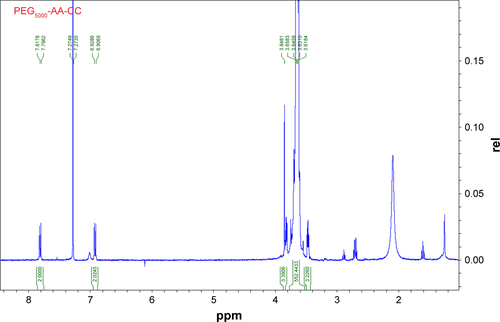
Figure S4 Stability of Au800-CTAB-PAA-PEG-AA.EPI complex (MR =5) incubated in the saline at 4°C (left tube in the image) and 37°C (right tube in the image) for 4, 24, and 48 hours. In addition, the size distribution results obtained from dynamic light scattering demonstrated that no aggregation occurred following the incubation.
Abbreviations: Au, gold; CTAB, hexadecyltrimethylammonium bromide; PAA, poly(acrylic acid); AA, anisamide; PEG, polyethylene glycol; EPI, epirubicin; MR, mass ratio; PDI, polydispersity index.
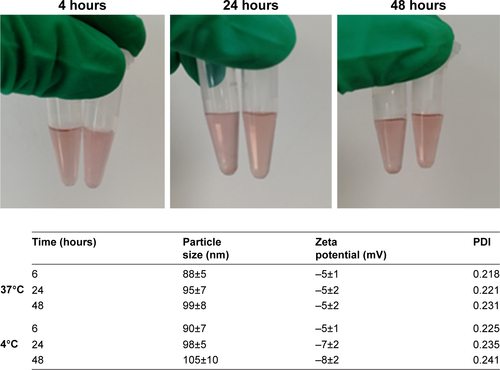
Figure S5 (A) Kinetic changes of surface temperature after the laser irradiation (808 nm, 2.5 W/cm2) of PBS, EPI, Au800-CTAB-PAA-PEG-AA (AuNR-AA), and AuNR-AA. EPI complex for 4.5 minutes. (B) Thermographic images of PBS, EPI, AuNR-AA, and AuNR-AA.EPI complex after the laser stimulation (808 nm, 2.5 W/cm2) for 4.5 minutes.
Abbreviations: Au, gold; CTAB, hexadecyltrimethylammonium bromide; PAA, poly(acrylic acid); AA, anisamide; PEG, polyethylene glycol; EPI, epirubicin.
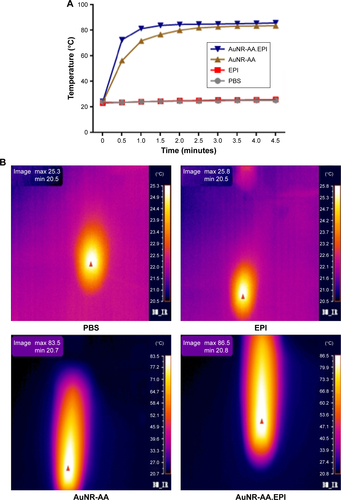
Figure S6 The expression of caspase 3, cleaved caspase 3, caspase 9, cleaved caspase 9, Bax, and Bcl-2 was determined using Western blotting (n=3) relative to β-actin. *P<0.05, **P<0.01, ***P<0.001, ****P<0.0001 relative to the untreated group; &P<0.05 relative to the AuNR-AA.EPI group.
Abbreviations: AuNR, gold nanorod; AA, anisamide; EPI, epirubicin.
